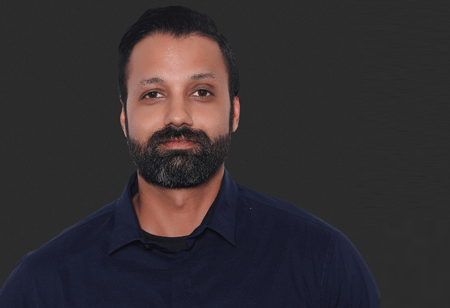Innovating on Insurance is the Only Way to Capture the Millennial Market
By Rohan Kumar, Co-Founder & CEO, Toffee

Rohan Kumar, Co-Founder & CEO, Toffee
Toffee insurance is an insurtech startup based out of India that focuses on creating sachet style microinsurance products across health and general insurance categories, the vision of Toffee Insurance is to create insurance products that are accessible, efficient & affordable to the next half billion uninsured consumers.
Adversities leave an impact no matter how strong our mitigation efforts might be, the effect of one is, often severe. For centuries now, we have been joining forces against all kind of unforeseen events. The protective value of the dollar was realized long ago, and hence financial protection seemed obligatory for most foreseeable adversities.
"Anything with a high risk factor from a personal and financial standpoint leads to a need for insurance"
This basic premise led to the emergence of insurance which somehow grew to its full definition and didn’t change course thereafter. Since long, insurance is an unattractive subject matter limited to traditional channels of outreach to a traditional audience. Hence, the question to ask today is the way insurance packaged and perceived still relevant. Despite this fast moving digitalled world of today, the insurance industry is still largely governed by agents walking the consumer through exhaustive documents and vague inclusions & exclusions. Additionally, these policies are abundant in complicated terminologies, leaving the insured party confused and unsure of security even post-purchase. To keep up with the pace of it is time for the insurance industry to pivot towards an online model with policies tailored to individual’s unique lifestyle related risks. With the process of purchasing the insurance and applying for the claims being available online, customers can have accessible insurance, obtainable at the click of a button which is the mantra for most services and commodities today.
The current sales model of insurance is predominantly offline, widening the insurance sales gap. Research has proven that the younger millennial generation is completely off this grid. The agentled approach to sell the insurance has become ineffective over time, and millennial are especially driven away from generic offline offers; it leaves them lacking advice and education to make informed financial decisions. The millennial audience is driven by relevant customized solutions and services and if the insurance sector breaks down and caters to their needs, the growth of the sector into this new generation is guaranteed.
Digital Space The Most Preferred Choice
As of today, the young consumer is an underserved audience with high expectations. Younger customers prefer the digital space as a source of information that they need to buy an insurance policy clean, uncluttered and relevant. An additional advantage of migrating the insurance customer interface to a more online model is the big impact of economies of a more centralized approach not relying on expensive agent led distribution networks driven by geographies. The cost benefit hence passed on to the customer makes the pricing far more attractive and affordable for a first experience of a younger audience. Paperless transactions are also much faster reducing turnaround time to merely a few hours.
Stronger digital engagement can cultivate loyalty into advocacy where every pushed communication can be tailor made, targeted and also measurable via a call to action. Beyond these may be additional opportunities to create and market new innovative insurance products to extend customer lifetime value and loyalty.
Conclusion
Beyond the medium which clearly leads to a digital future, the insurance industry lacks modernization in product offering. The new consumer’s different needs and priorities should be taken into consideration in order for it to resonate and create stickiness. Over the last few decades, it is clear to see the modifications made in the insurance sector has been slow whereas other industries such as banking and securities have taken incredible leaps forward making it easier for consumers to avail their services basis new products and offerings hence retaining and growing their relevance. Currently, customer satisfaction is paramount therefore all services that make products more accessible and easy-to-use are doing well as compared to the ones that are dated.
One of the biggest changes that have been observed in the recent times is the emergence of blockchain technology exchange of value on a user-to-user basis without the presence of intermediaries acting as negotiators of money and information. Multiple industries across sectors are swiftly adopting this. The same has been slowly penetrating in the insurance sector, removing third party intervention, eliminating paperwork and bureaucracy. Artificial intelligence is another technological advancement which will help in analyzing the capacity of claims and process making for a more efficient transmission mechanism. Claims get processed in mere seconds with the help of artificial intelligence. This will bring the everyday activities of policy managers on a fast track.
Specialized lifestyle oriented insurances are another the need of the hour. People tend to prefer to insure almost all their expensive acquirements from a phone to even something as small as a watch. It is not just about protection against a hazard, health or natural. Anything with a high risk factor from a personal and financial standpoint leads to a need for insurance. Customization is a key element in all businesses, so is the case for insurance. Just considering how risk is defined differently over time, it can be concurred that all generic insurances will not fit everyone’s requirements. Hence innovation comes into play, to curate products and services that cater to specific needs of the ever evolving.
The impact that innovation is bringing in the insurance and insurtech domain is hence allowing for new digitallyled companies to compete with traditional insurance firms through these specialized services.




